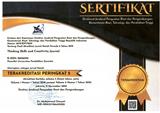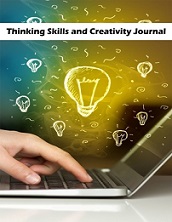Psycholinguistic Studies: Acquisition of Indonesian Phonology in Down Syndrome Children
DOI:
https://doi.org/10.23887/tscj.v6i2.72162Keywords:
Phonological Acquisition, Down Syndrome, Speech Changes, Cognitive DevelopmentAbstract
Language acquisition is a process that takes place in a child's brain when he acquires his first language or mother tongue which means language acquisition in relation to his first language. This study aims to analyze the acquisition of Indonesian phonology in Down syndrome children. This study was conducted on 5 Down syndrome, age range of 6-9 years. This study use Blumstein's theory of speech changes is used to determine the change of speech sounds and Jacobson's theory is used to determine the acquisition of phonology Indonesian and Jean Piaget's theory is used to describe the language development of them. The method used is proficient and record. It was found that the five respondents in pronouncing several words there was a change in the sound of speech, namely sound Deletion (Omision), sound addition (Addition), and sound replacement (Substitution). They have also acquired some of the Indonesian vowel sounds [i], [ u], [e], [o] and [a]. They can produce several vowels sounds either at the beginning, middle or end words. There are some consonants that have been acquired Indonesian and there are some consonant sounds that have not been obtained, [w], [f]. [z], and [h]. The phonological development is the stage of holoprastic. Their chronological age is 6 to 9 years, but the age of language acquisition is equivalent to the age of two years.
References
Adnyani, N. L. P. S., Sari, R. A., Saputra, P. E. D., Pastika, I. ., & Suparwa, I. N. (2018). Implementing ICT-Based Phonology Learning Material Using Blendspace Trough Classroom Action Research". Characters, 30(2), 319–330. https://doi.org/10.29255/aksara.30i2.76.319-330. DOI: https://doi.org/10.29255/aksara.v30i2.76.303-314
Agustyaningrum, N., & Pradanti, P. (2022). Teori Perkembangan Piaget dan Vygotsky: Bagaimana Implikasinya dalam Pembelajaran Matematika Sekolah Dasar? Jurnal Absis: Jurnal Pendidikan Matematika Dan Matematika, 5(1), 568–582. https://doi.org/10.30606/absis.v5i1.1440. DOI: https://doi.org/10.30606/absis.v5i1.1440
Al-Bantany, N. F. (2013). The Use of Commissive Speech Acts and Its Politeness Implication: A Case of Banten Gubernatorial Candidate Debate. Passage, 1(Vol 1, No 2 (2013): October Graduation 2013), 21–34. https://ejournal.upi.edu/index.php/psg/article/view/534.
Al-Shidhani, T. A., & Arora, V. (2012). Understanding dyslexia in children through human development theories. Sultan Qaboos University Medical Journal, 12(3), 286–294. https://doi.org/10.12816/0003141. DOI: https://doi.org/10.12816/0003141
Arya Wiradnyana, I. G., Ardiawan, I., & Km. Agus Budhi A.P. (2020). Inside-Outside Circle Instructional Strategies with Image Media to Enhance Children Language Skills. JPUD - Jurnal Pendidikan Usia Dini, 14(1), 156–168. https://doi.org/10.21009/141.11. DOI: https://doi.org/10.21009/141.11
Ayyad, H., AlBustan, S., & Ayyad, F. (2021). Phonological development in school-aged Kuwaiti Arabic children with Down syndrome: A pilot study. Journal of Communication Disorders, 93, 106128. https://doi.org/10.1016/j.jcomdis.2021.106128. DOI: https://doi.org/10.1016/j.jcomdis.2021.106128
Budianingsih, T. (2017). Peran Neurolinguistik dalam Pengajaran Bahasa. Jurnal Al-Azhar Indonesia Seri Humaniora, 3(2), 137. https://doi.org/10.36722/sh.v3i2.203. DOI: https://doi.org/10.36722/sh.v3i2.203
Buragohain, D., Syamril, M., & Check, A. (2018). Blending Folklore with Technology as Language Teaching and Learning Tools. Role and Impact, 1(1). http://dspace.unimap.edu.my/bitstream/handle/123456789/66514/Blending Folklore with Technology as Language Teaching and Learning Tools.pdf?sequence=1.
Chubko, N., Morris, J. E., McKinnon, D. H., Slater, E. V., & Lummis, G. W. (2020). Digital storytelling as a disciplinary literacy enhancement tool for EFL students. Educational Technology Research and Development, 68(6), 3587–3604. https://doi.org/10.1007/s11423-020-09833-x. DOI: https://doi.org/10.1007/s11423-020-09833-x
Cubukcu, C., Murat, K. C., & Yigit, O. (2020). “Mobile Game Development for Children with Down Syndrome.” International Journal of Interactive Mobile Technologies, 14(20), 174–83,. https://doi.org/10.3991/IJIM.V14I20.16573. DOI: https://doi.org/10.3991/ijim.v14i20.16573
Diez-Itza, E., Vergara, P., Barros, M., Miranda, M., & Martínez, V. (2021). Assessing phonological profiles in children and adolescents with Down syndrome: The effect of elicitation methods. Frontiers in Psychology, 12, 1610. https://doi.org/10.3389/fpsyg.2021.662257. DOI: https://doi.org/10.3389/fpsyg.2021.662257
Fachriyah, E. (2017). The functions of code switching in an English language classroom. Studies in English Language and Education, 4(2), 148–156. https://doi.org/10.24815/siele.v4i2.6327. DOI: https://doi.org/10.24815/siele.v4i2.6327
Fitriyani, F., Sumantri, M. S., & Supena, A. (2019). Language development and social emotions in children with speech delay: case study of 9 year olds in elementary school. Jurnal Konseling Dan Pendidikan, 7(1), 23. https://doi.org/10.29210/130600. DOI: https://doi.org/10.29210/130600
Hanafi, I., & Sumitro, E. A. (2020). Perkembangan Kognitif Menurut Jean Piaget Dan Implikasinya Dalam Pembelajaran. Alpen: Jurnal Pendidikan Dasar, 3(2). https://doi.org/10.24929/alpen.v3i2.30. DOI: https://doi.org/10.24929/alpen.v3i2.30
Happé, F., & Frith, U. (2014). Annual research review: Towards a developmental neuroscience of atypical social cognition. Journal of Child Psychology and Psychiatry and Allied Disciplines, 55(6), 553–577. https://doi.org/10.1111/jcpp.12162. DOI: https://doi.org/10.1111/jcpp.12162
Hardi, N. A., Sidik, S. A., & Mulia, D. (2022). Penerapan modifikasi perilaku menggunakan token ekonomi untuk mengurangi perilaku hiperaktif dalam pembelajaran anak down syndrome. Jurnal Unik : Pendidikan Luar Biasa, 7(1), 23–27. https://doi.org/10.30870/unik.v7i1.12995. DOI: https://doi.org/10.30870/unik.v7i1.12995
Hashim, H. U., & Yunus, M. M. (2018). English as a Second Language (ESL) Learning: Setting the Right Environment for Second Language Acquisition. Tadris: Jurnal Keguruan Dan Ilmu Tarbiyah, 3(2), 207. https://doi.org/10.24042/tadris.v3i2.2941. DOI: https://doi.org/10.24042/tadris.v3i2.2941
Juwantara, R. A. (2019). Analisis Teori Perkembangan Kognitif Piaget Pada Tahap Anak Usia Operasional Konkret 7-12 Tahun Dalam Pembelajaran Matematika. Al-Adzka: Jurnal Ilmiah Pendidikan Guru Madrasah Ibtidaiyah, 9(1), 27–34. https://core.ac.uk/download/pdf/327227393.pdf. DOI: https://doi.org/10.18592/aladzkapgmi.v9i1.3011
Kartini, K. (2021). Improving Language Skills (Speaking) for Children Age 3 – 4 Years Using Picture Card Media. Journal of Educatio FKIP UNMA, 7(2), 425–431. https://doi.org/10.31949/educatio.v7i2.1070. DOI: https://doi.org/10.31949/educatio.v7i2.1070
Katsarou, D., & Andreou, G. (2022). Phonological patterns in Greek language in toddlers and children with Down syndrome and children with language impairment. British Journal of Special Education, 49(3), 420–437. https://doi.org/10.1111/1467-8578.12410. DOI: https://doi.org/10.1111/1467-8578.12410
Knauer, H. A., Jakiela, P., Ozier, O., Aboud, F., & Fernald, L. C. H. (2020). Enhancing young children’s language acquisition through parent–child book-sharing: A randomized trial in rural Kenya. Early Childhood Research Quarterly, 50, 179–190. https://doi.org/10.1016/j.ecresq.2019.01.002. DOI: https://doi.org/10.1016/j.ecresq.2019.01.002
Lanfranchi, S., Onnivello, S., Lunardon, M., Sella, F., & Zorzi, M. (2021). Parent-based training of basic number skills in children with Down syndrome using an adaptive computer game. Research in Developmental Disabilities, 112. https://doi.org/10.1016/j.ridd.2021.103919. DOI: https://doi.org/10.1016/j.ridd.2021.103919
Law, J. M., De Vos, A., Vanderauwera, J., Wouters, J., Ghesquière, P., & Vandermosten, M. (2018). Grapheme-phoneme learning in an unknown orthography: A study in typical reading and dyslexic children. Frontiers in Psychology, 9(AUG), 1–10. https://doi.org/10.3389/fpsyg.2018.01393. DOI: https://doi.org/10.3389/fpsyg.2018.01393
Levia, R., Jufrizal, J., & Marlina, L. (2019). The Study Of Language Disorder Of An Autistic Savant Portrayed In Levinson ’ S Rain Man Film ( 1988 ). English Language and Literature, 8(1). https://doi.org/10.24036/ell.v8i1.103059. DOI: https://doi.org/10.24036/ell.v8i1.103059
Mangion, M., & Riebel, J. A. (2023). Young Creators: Perceptions of Creativity by Primary School Students in Malta. Journal of Intelligence, 11(3), 53. https://doi.org/10.3390/jintelligence11030053. DOI: https://doi.org/10.3390/jintelligence11030053
Martínez, Z. L. G., & Carvajal, S. A. R. (2021). Teaching English Online to Students with Autism Spectrum Disorder and Down Syndrome During the covid-19 Pandemic. Ikala, 26(3), 715–730. https://doi.org/10.17533/udea.ikala.v26n3a13. DOI: https://doi.org/10.17533/udea.ikala.v26n3a13
Mifroh, N. (2020). Teori Perkembangan Kognitif Jean Piaget dan Implementasinya dalam Pembelajaran di SD/MI. Jurnal Pendidikan Tematik (JPT), 1(3), 253–263. https://siducat.org/index.php/jpt/article/view/144.
Novianti, R., Syihabuddin, & Rochyadi, E. (2019). Phonology-based reading instruction to improve dyslexic students’ early reading ability. Indonesian Journal of Applied Linguistics, 9(2), 443–451. https://doi.org/10.17509/ijal.v9i2.20242. DOI: https://doi.org/10.17509/ijal.v9i2.20242
Pandudinata, R. S., & Kundharu, S. (2018). Pemerolehan Bahasa Anak Tunagrahita di Pacitan. Humanus, 17(1). http://ejournal.unp.ac.id/index.php/humanus/index . DOI: https://doi.org/10.24036/humanus.v17i1.8542
Schuetze, M., Cho, I. Y. K., Vinette, S., Rivard, K. B., Rohr, C. S., Eycke, K. Ten, Cozma, A., McMorris, C., McCrimmon, A., Dewey, D., & Bray, S. L. (2019). Learning with individual-interest outcomes in Autism Spectrum Disorder. Developmental Cognitive Neuroscience, 38, 100668. https://doi.org/10.1016/j.dcn.2019.100668. DOI: https://doi.org/10.1016/j.dcn.2019.100668
Sharma, L. R. (2021). Analysis of Difficulty Index , Discrimination Index and Distractor Efficiency of Multiple Choice Questions of Speech Sounds of English. International Reasearch Journal of MMC, 2(1), 15–28. https://doi.org/10.3126/irjmmc.v2i1.35126. DOI: https://doi.org/10.3126/irjmmc.v2i1.35126
Tay, H. Y., Kee, K. N. N., & Hui, S. K. F. (2019). Effective Questioning and Feedback for Learners with Autism in an Inclusive Classroom. Cogent Education, 6(1). https://doi.org/10.1080/2331186X.2019.1634920. DOI: https://doi.org/10.1080/2331186X.2019.1634920
Teppa, R., Rorimpandey, R., & Posumah, J. (2022). Improving students’ listening skills by using songs’ lyrics in a study conducted at SMAN 1 Melonguane. JoTELL : Journal of Teaching English, Linguistics, and Literature, 1(2), 244–260. https://doi.org/10.2801/jotell.v1i2.3428.
Tjendani, E. N., Suastra, I. M., Mbete, A. M., & Seri Malini, N. L. N. (2019). An Ecolinguistics Perspectives For English Syllabus Development. E-Journal of Linguistics, 13(2), 249. https://doi.org/10.24843/e-jl.2019.v13.i02.p06. DOI: https://doi.org/10.24843/e-JL.2019.v13.i02.p06
Trianingsih, R. (2016). Pengantar Praktik Mendidik Anak Usia Sekolah Dasar. Al Ibtida: Jurnal Pendidikan Guru MI, 3(2), 197. https://doi.org/10.24235/al.ibtida.snj.v3i2.880. DOI: https://doi.org/10.24235/al.ibtida.snj.v3i2.880
Ulfa, M., & Na’imah, N. (2020). Peran Keluarga dalam Konsep Psikologi Perkembangan Anak Usia Dini. Aulad : Journal on Early Childhood, 3(1), 20–28. https://doi.org/10.31004/aulad.v3i1.45. DOI: https://doi.org/10.31004/aulad.v3i1.45









